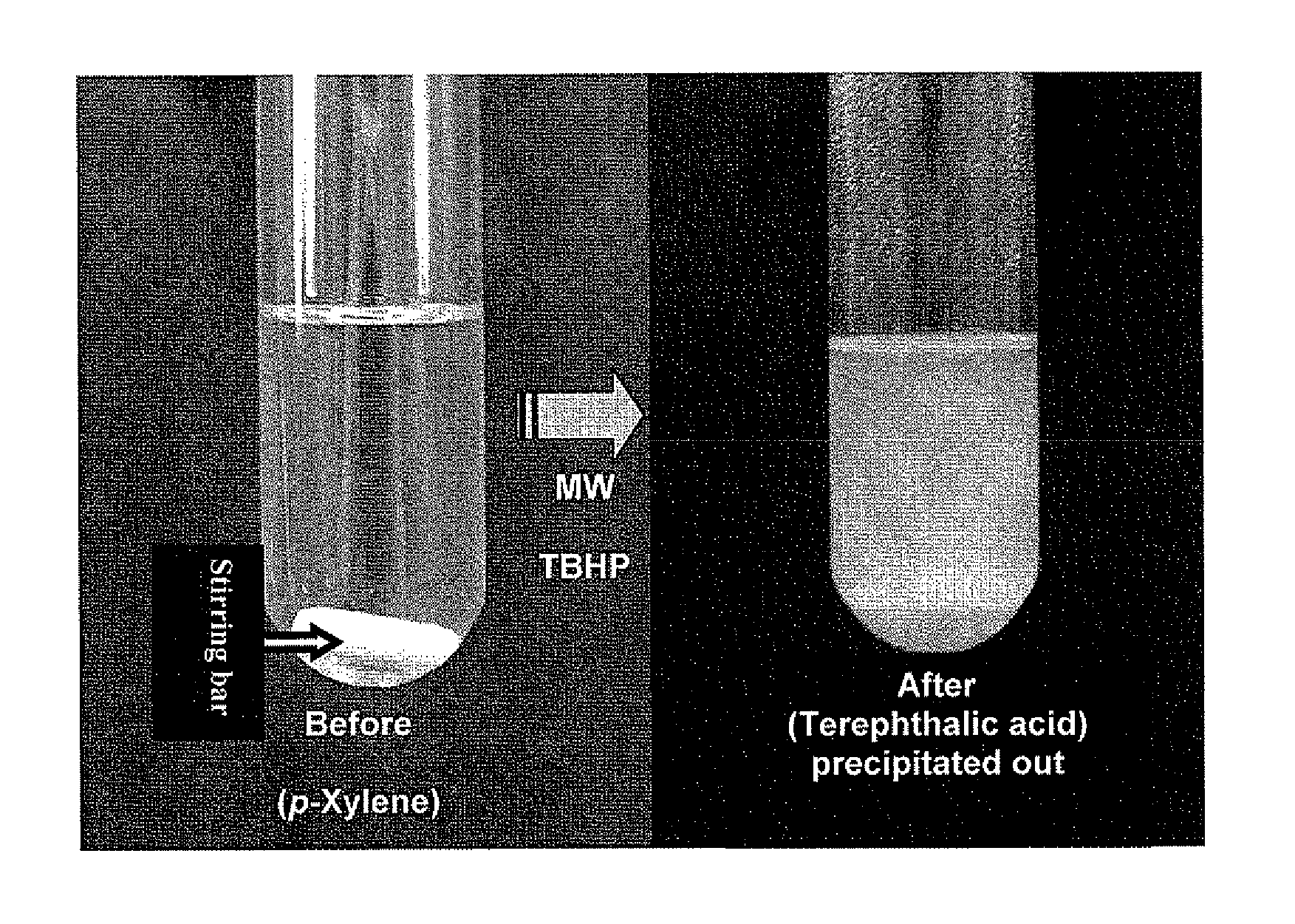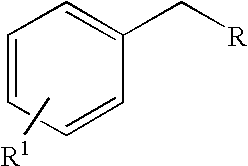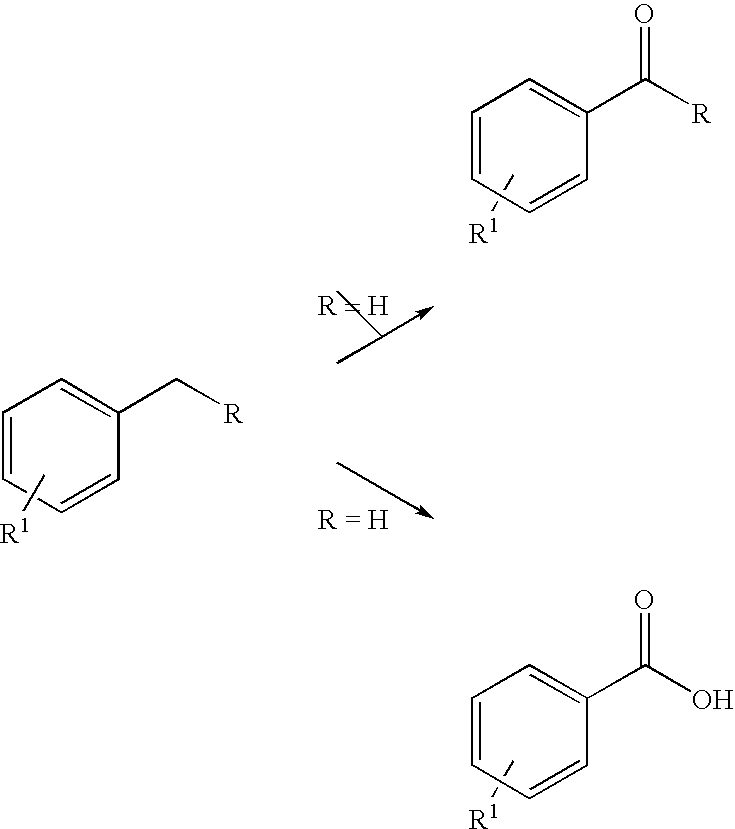Oxidation process for aromatic compound
a technology of aromatic compounds and oxidation processes, which is applied in the direction of oxidation of carbonyl compounds, carboxylic compound preparations, organic chemistry, etc., can solve the problems of high energy consumption and environmental challenges of oxidation reactions
- Summary
- Abstract
- Description
- Claims
- Application Information
AI Technical Summary
Benefits of technology
Problems solved by technology
Method used
Image
Examples
example 1
[0035]We initially studied oxidation of methylene substituted benzylic aromatics to ketones (Scheme 1, R≠H). When a mixture of fluorene with 10 equivalents 70% aqueous TBHP was irradiated with microwave in a sealed vessel for 10 minutes (250 W, 170° C.), an almost quantitative yield of fluorenone was isolated (Table 1). As a control experiment, when we simply refluxed the same reaction mixture by conventional oil bath heating for 8 hours, only a trace amount of fluorenone could be detected by TLC. Oxidation of another substrate with a doubly activated benzylic position, diphenylmethane, also afforded benzophenone in high yield. For the mono-activated methylene units, ethylbenzene to acetophenone and tetrahydronaphthalene to alpha-tetralone, the oxidations under this green protocol also went smoothly. The results are summarized in Table 1.
[0036]
TABLE 1TBHP Oxidation of Alkyl Substituted Aromatics to Ketones under Microwave IrradiationRunSubstrateConditionsProductyield1170° C., 10 min...
example 2
[0037]With the preliminary success in the oxidation of the methylene benzylic units, we then turned to a more challenging oxidation of methyl substituted aromatics.
[0038]Oxidation of toluene to benzoic acid was first used as the model study. With six equivalents of 70% aqueous TBHP (2 folds in excess), toluene was converted in 9.1% to benzoic acid under microwave irradiation at 160° C. for 1 hr (Run 1, Table 2). It is well documented that solvents with high dielectric constants would enhance the microwave heating effect. When the oxidation reactions were carried out in tert-butanol, nitrobenzene or acetonitrile (Runs 2, 3, 4) as the co-solvents, the percentage conversions were increased to 20-27%. We also explored the uses of other TBHP formulations such as TBHP in isooctane and toluenel18,19. Oxidation can still take place but the results are inferior to the use of aqueous TBHP.
[0039]As a control experiment, we carried out the oxidation at reflux (130° C.) by conventional heating f...
PUM
| Property | Measurement | Unit |
|---|---|---|
| Temperature | aaaaa | aaaaa |
| Temperature | aaaaa | aaaaa |
| Temperature | aaaaa | aaaaa |
Abstract
Description
Claims
Application Information
 Login to View More
Login to View More - R&D
- Intellectual Property
- Life Sciences
- Materials
- Tech Scout
- Unparalleled Data Quality
- Higher Quality Content
- 60% Fewer Hallucinations
Browse by: Latest US Patents, China's latest patents, Technical Efficacy Thesaurus, Application Domain, Technology Topic, Popular Technical Reports.
© 2025 PatSnap. All rights reserved.Legal|Privacy policy|Modern Slavery Act Transparency Statement|Sitemap|About US| Contact US: help@patsnap.com



